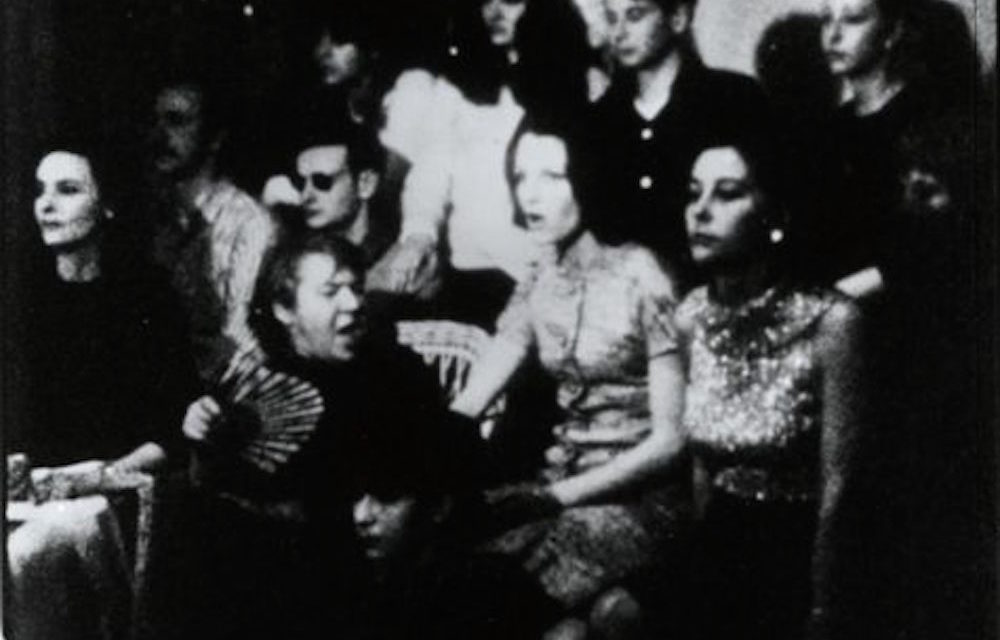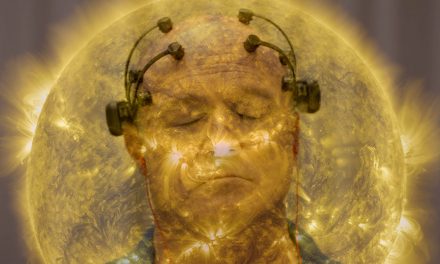Beyond the boundaries of Emory’s campus, Atlanta’s arts scene is in full bloom. Its film community, in particular, is making national headlines: From The Hunger Games to The Walking Dead, the city is becoming a leading location for the filming of Hollywood blockbusters. (Recently, Georgia was named the third most popular U.S. state to film in, just behind California and New York.) But beneath the recent buzz of mainstream cinema lies Atlanta’s quieter underground community of filmmakers and film enthusiasts.
Enter Andy Ditzler. For over 10 years his Film Love series has helped cultivate Atlanta’s film scene, providing Atlantans with the opportunity to watch, discuss and appreciate films they otherwise might not have a chance to see. A skilled projectionist and curator, Ditzler discusses the history and cultural background of the films before his screenings with an impressive attention to detail. After, he always allows time for questions and open discussions from the audience, which often results in an engaging, lively and easygoing group conversation on a film’s meaning, technical processes and place in history.
Ditzler’s Oct. 22 screening took place in the warehouse of Beautiful Briny Sea, a local artisan dry goods company. He showed three films: Grant Park, a misty, emerald meditation on photosynthesis and Atlanta’s historic Grant Park neighborhood by local filmmaker Robbie Land; Spiral Jetty, Robert Smithson’s artistic depiction of the creation of his massive sculpture of the same name; and Print Generation, a 50-minute experimental piece by J. J. Murphy in which a one-minute loop of clear footage is decayed into abstract shapes and colors with each passing minute.
His more recent screening took place Nov. 6 at the Atlanta Contemporary Arts Center, where he showed The Life of Juanita Castro, a collaboration between director Andy Warhol and writer Ronald Tavel. Shot in under three hours, the film consists of two takes and was one of the many hasty, spontaneous works directed by Warhol during New York’s 60s underground arts scene. In it, Tavel acts as an on-screen director, giving lines and instructions to a group of people who have never heard or rehearsed the film. The setup mimics a family portrait of the Castro family, and the on-screen interactions between Fidel, Che, Raul and Juanita Castro are meant to satirize the Cuban Revolution, while also subverting the rules of filmmaking.
After having the opportunity to meet Ditzler at his most recent screening, I then asked him some questions about the Film Love series and about cinema via email.
Austyn Wohlers: Where did the idea for the Film Love screenings come from?
Andy Ditzler: It came from the films. I’d always read a lot about film, and I would run across descriptions of movies that sounded really interesting, or were clearly influential — but there weren’t copies of them to watch. In 2002, I got interested in a set of films having to do with the Beat Generation. They were not Hollywood movies, but mysterious experimental works made in the 50s, i.e. in the actual Beat era. In order to see them, I found out, they had to be rented from distributors in the form of 16mm film prints. I had no projectors or experience with this, but I really wanted to see these films and this was the only way. So in order to offset the cost of renting them, I showed them to the public and charged an admission, figuring that if I was interested in seeing these, others would be, too. The shows were a success and in the process, I realized that there are so many films like this out there, films that are great but have never been published on video or uploaded online, because it’s simply not profitable to digitize them.
And pretty much in that moment, I became a “curator of film,” though it took me a while to realize that. I did realize early on that my desire to track down these rare films and see them was inextricable from the act of showing them to an audience. In that sense, as a curator I am always also an audience member. Often, there’s very little separation there for me, and that’s interesting.
AW: What are you hoping to achieve through the screenings?
AD: As [my] mission statement says, I provide access to these hard-to-see films, from all of cinema history (the present day all the way back to early moving image technologies). This access takes the form of public screenings, which means that in addition to showing films, I’m also preserving a communal moviegoing experience that was once taken for granted in our culture, but which is slowly giving way to more individual viewing experiences. The experience of watching films together needs preservation, just like the films do.
Film Love has a double focus, then — on film works and their communal viewing. At my screenings there are always discussions after the films are over, and the interactions between people that these films inspire are as important to me as the films themselves. So bringing people together, through films, is a primary goal.
AW: Any comments on how analog film compares to digital films for you? Is it a lot like a music enthusiast’s attraction to vinyl? Something more? Something less?
AD: I’m not a purist about film formats, although I enjoy film projection more than digital projection. The way in which a strip of still images is converted to (the illusion of) motion on screen, at the rate of 24 frames per second and using barely perceptible flicker, is quite magical. Digital is more convenient, and less magical. That said, I take the idea of access seriously, which means that if the only way to see a particular film is to show it on digital video (even if it was originally made on film), I often do that. There is a sense, though, in which I try to keep 16mm projection visible, out in public and try to foster an appreciation for what it really does. So much of my series is about reminding us as viewers that a movie isn’t just a set of images with dialogue telling a story — it’s also an ephemeral experience of projected light, and there’s a deeper meaning in that.
AW: How do you choose the films you want to show?
AD: There are so many films out there, that are great but aren’t seen often enough. I have lists and lists of things I want to show, and am always discovering new things. I go through old film catalogs, distributor lists — I love that stuff. It’s important to know what’s going on now — knowing current filmmakers who are doing interesting work and need the support that screenings provide. But there are a lot of film festivals and film series that are almost exclusively focused on showing current, new films, whereas I think that we also benefit from the historical perspective of seeing older work that isn’t as well known.
AW: I see many shows have been at the Atlanta Contemporary Arts Center, but you sometimes show films at other locations, such as Beautiful Briny Sea. Is this a conscious choice, or do you just take what you can find? Are you hoping to establish a stable location, or do you want the screenings more sporadic, almost like take away shows?
AD: One of the things about Film Love is that out of necessity I was forced into screening situations I never would have consciously chosen, but which gradually came to be important to me. I’ve never had regular access to a conventional movie theater, and that has forced me to be creative about the spaces in which I screen. Lots of thought goes into what space is appropriate for a given program, and the best solutions are not always the most obvious choices. I might choose to show an abstract art film in a regular movie theater, instead of an art space — because the context of the space can greatly affect how a film is experienced by the audience.
Additionally, because I show in lots of different places, Film Love doubles as a kind of ongoing tour of interesting spaces in the city. (There is a lot to be said, though, for a stable location and I would like to have that as well.) The same goes for scheduling. Film Love is specifically not conceived as a “film festival” but as an ongoing project, presented cumulatively, so that one screening speaks to the next one or to the previous one over time.
AW: Got any advice for people who want to get more into Atlanta’s art, specifically film, communities?
AD: Screening activity has picked up in the city — Eyedrum (Downtown) is regularly showing artists’ films, the Contraband Cinema group has grown up over the past few years with their ongoing screenings, the Atlanta Film Festival programmers are doing year-round work, repertory cinema pops up at the Midtown Promenade theater and Emory has their weekly international public film series, just to mention a few. I think it’s important to get out and see not just films but art shows, experimental music, and dance — and then, equally important, to have conversations about it. All of these things feed into each other in a good art community.
AW: And finally: aside from curation, are you involved in any creative projects of your own right now?
AD: My earliest training is as a musician and I am currently recording an album of songs tied to a kind of musical theater piece that I’m composing. I also have an art collective, John Q, which works with archival and historical materials to create public art. I find that all [of] these different activities, including the film series, speak to each other in interesting and surprising ways.






